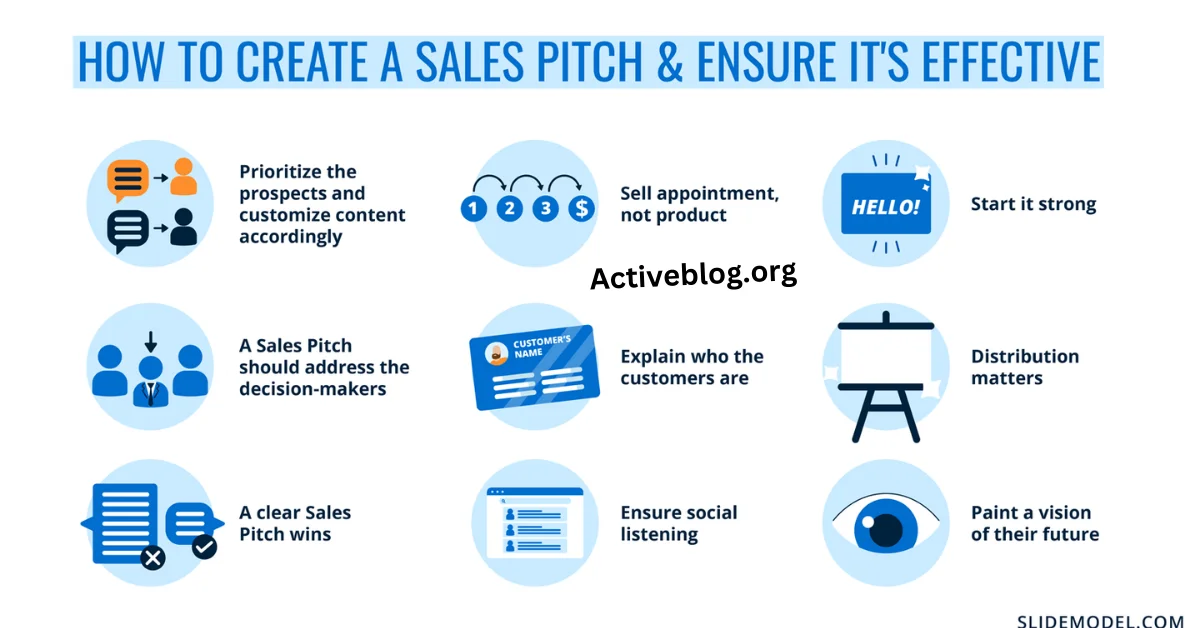Crafting an effective sales pitch requires understanding the people you are trying to reach and how your product or service can help them. Including social proof like testimonials and case studies is essential to demonstrate your value and build trust.
Using an anecdote that relates to your target audience’s specific situation can be particularly powerful. This approach adds a personal touch that can increase engagement and build rapport.
Know Your Product
The most important part of a sales pitch is ensuring you thoroughly understand your product and how it can benefit customers. This knowledge allows you to answer any questions your prospects may have and address any objections they may raise.
You should also explain how your product solves your prospect’s pain points and provides a unique selling point. Sharing success stories or testimonials highlighting these benefits can help you connect emotionally with your options. It can also provide credibility that will strengthen your argument and make it more persuasive.
Know Your Prospect
When you know your prospect, you can tailor your sales presentation to meet their needs. This includes addressing their key decision-making criteria and providing proof points like testimonials, references, awards, and customer success stories.
Keeping your ideas as simple as possible is also essential. Over-explanation and confusion will only frustrate your prospects and push them away. Knowing your prospect’s industry, company size, and location is also crucial. This helps you disqualify prospects who could be a better fit for your product or service.
Know Yourself
To be successful in sales, it is essential to know yourself. This means more than just knowing your strengths and weaknesses. It means understanding what drives you and what makes you tick.
Start your pitch with a personal anecdote that relates to the problem you solve. This will grab your audience’s attention and make them remember your company. Visual aids can also be effective, but be careful not to rely too much on them. Keep your pitch short and simple. Talking too long or using filler words can turn your audience off.
Know Your Audience
Getting to know your audience is key to crafting a compelling sales pitch. Otherwise, you risk presenting a generic message that won’t resonate with them.
You can use statistics and case studies to support your emotional appeal. These proof points build credibility and confidence for your audience, which is critical in making them feel comfortable purchasing from you. Then, tell a personalized story contextualizing your product for their specific situation or industry. This will help make your audience feel like you understand them and their challenges.
Know Your Message
A sales pitch should grab your audience’s attention and show them how your product or service addresses their main problems. A great way to do this is by providing testimonials and case studies highlighting your solution’s success.
Visual aids like PowerPoint slides can help make your pitch more straightforward. But don’t rely too much on them – you want your message to be clear enough to register with your audience immediately. This will build trust and move them closer to buying.
Know Yourself as a Salesperson
Knowing yourself as a salesperson is essential because it helps you connect with prospects and build confidence in your product. It also allows you to anticipate and address objections that might keep them from making a purchase.
Edinger suggests enlisting the help of mentors or colleagues to role-play and give feedback on your pitch. They can advise on your tone, body language, and clarity of message.
Top salespeople are constantly working to improve themselves and their skills. Don’t get discouraged by rejections or unsuccessful pitches — learn from them to develop more effective messaging in the future.
Know Your Message as a Business
A well-crafted sales pitch can help you to captivate potential buyers. It helps to set you apart from your competitors and chart the course for a productive, effective, two-way conversation.
Start with a personal anecdote that focuses on the problem you solve. Then, ask a question that resonates and offers stakes.
Remember that decisions aren’t always based on logic or practicality; emotions like excitement, relief, and satisfaction can also influence them. To evoke these emotions, highlight key results from a successful customer experience.
Know Your Message as a Person
Your sales pitch is your business card, mission statement, and company persona all rolled into one. It showcases your passion for what you do and makes potential customers want to invest their money in your business.
To keep your audience engaged, consider telling a story. This could be about how your company started or about how a customer used your product to achieve success.
Using visual aids in your pitch is also a good way to keep your audience’s attention. However, be careful not to rely too heavily on them.
Know Your Message as a Leader
A great sales pitch is short and focuses on the buyer. It’s also backed up with data, statistics, and social proof to help build trust with your audience.
A dynamic sales pitch will grab the listener’s attention and highlight unique features that set your product apart from competitors. It might also include client endorsements or success stories.
A good sales pitch shows that you understand your prospective customers’ needs. This includes understanding their pain points and demonstrating how your product or service can alleviate those concerns.
Know Your Message as a Human Being
A sales pitch is a targeted presentation of a product or service to sell it. It is a powerful tool for generating interest in your business and building relationships that lead to sales.
To create a compelling sales pitch, you must understand the problem your company solves. Use a story to illustrate the problem, then demonstrate how your business has helped others solve that problem.
You can also add a personal touch by using an anecdote, question, or eye-opening statistic that relates to the prospect’s pain points and desires.










